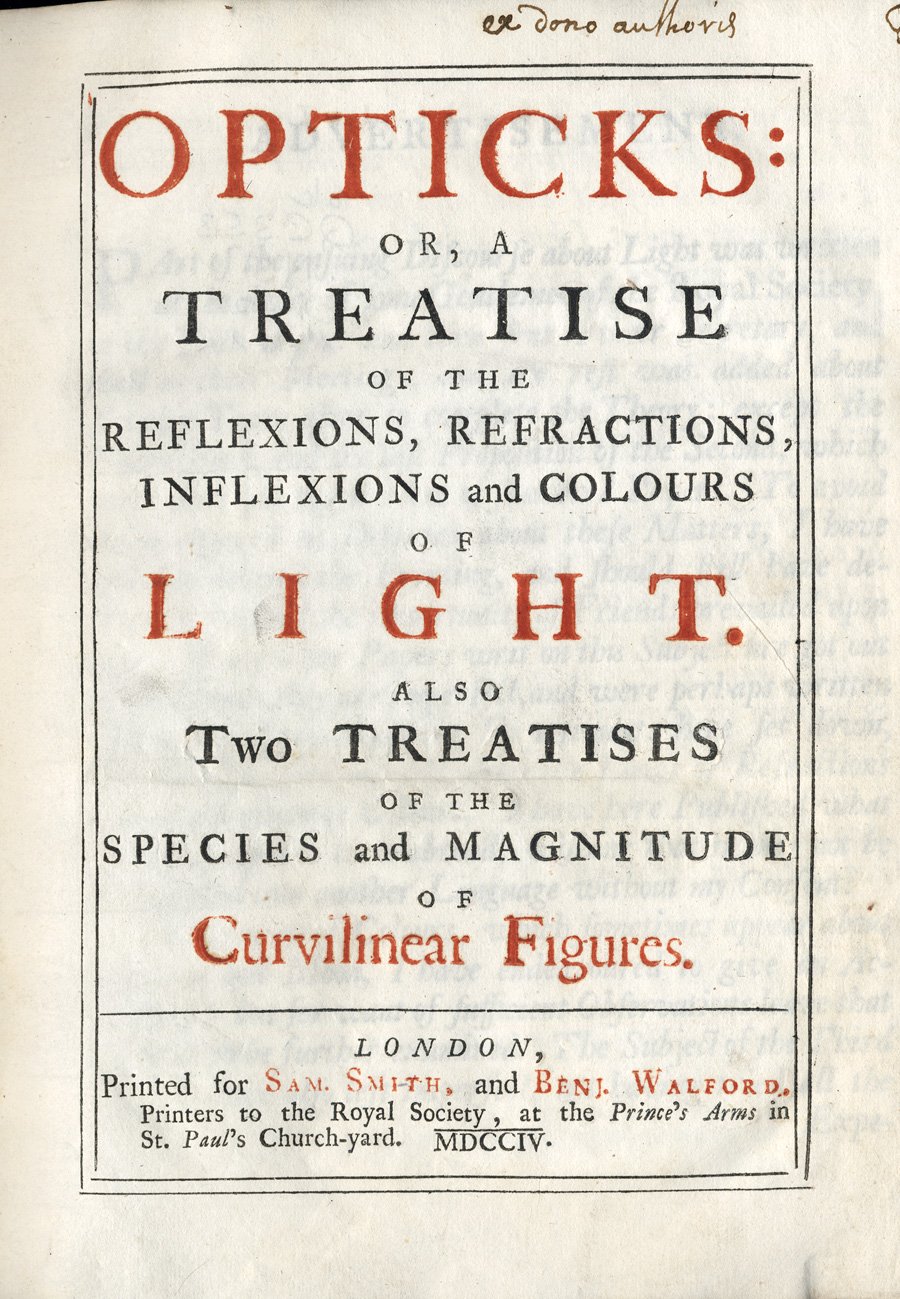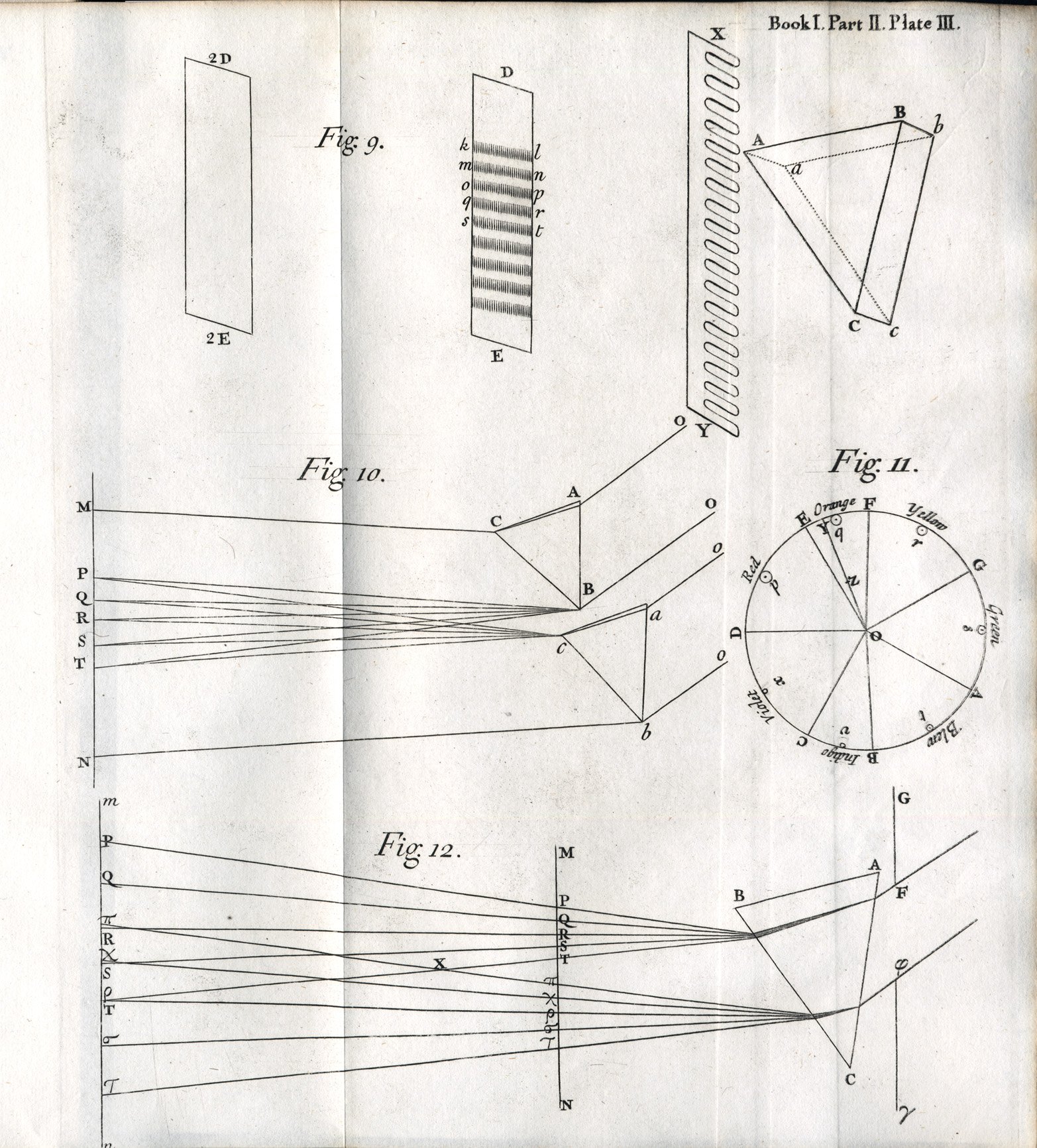Newton
In his Opticks, Newton (1642-1726) posited that white light contains all colors. He experimented with splitting a light beam into the red, orange, yellow, green, blue, indigo and violet spectrum—commonly remembered as ROYGBIV—and showed how colors arise from selective absorption, reflection or transmission of the various component parts of the incident light.
Unlike the color circle of today, Newton’s circle was not divided into even segments. Instead, the segment sizes are proportional to their respective color’s intensity in the spectrum and the point marked Z represented the concentration point for the circle.

Newton, Isaac, Sir. Opticks, Or, A Treatise of the Reflexions, Refractions, Inflexions and Colours of Light also Two Treatises of the Species and Magnitude of Curvilinear Figures. Variation: Library of English Literature; LEL 11813. London: Printed for Sam. Smith, and Benj. Walford, printers to the Royal Society, 1704. Special Collections: QC353 N5

Newton, Isaac, Sir. Opticks, Or, A Treatise of the Reflexions, Refractions, Inflexions and Colours of Light also Two Treatises of the Species and Magnitude of Curvilinear Figures. Variation: Library of English Literature; LEL 11813. London: Printed for Sam. Smith, and Benj. Walford, printers to the Royal Society, 1704. Special Collections: QC353 N5
